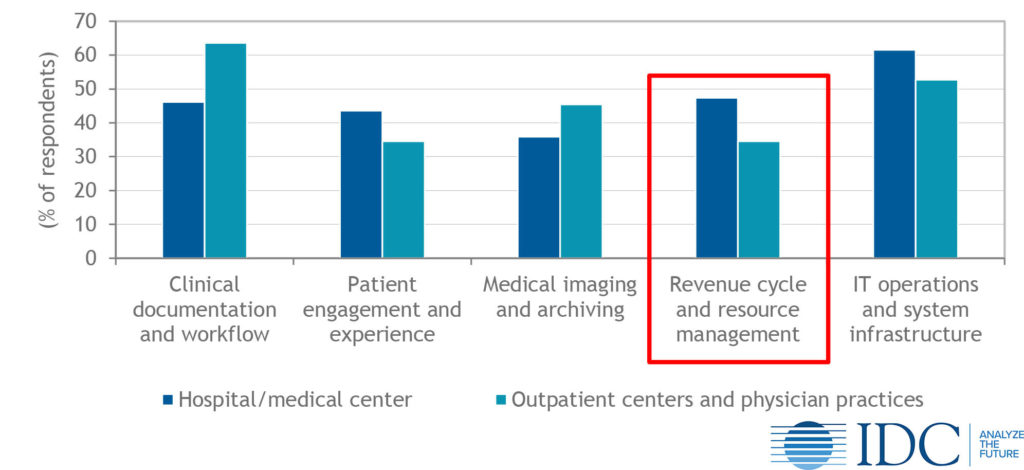Register for the Next Generation Revenue Cycle and Provider Operations webinar, live on July 17th at 11 AM/EST, to learn more about the next-generation RCM capabilities that will impact provider operations and how to prepare for next-generation RCM.
Revenue cycle management (RCM) needs to be reinvented for the digital era. The lines between providers, payers, and patients are blurring. Many patients have taken on more financial responsibility under high-deductible health plans and do not want to be surprised by a bill. Patients also have more power as consumers to choose where to go for more transparent, digital, and convenient care experiences. As of lately, RCM forms an important focus area for the rebound stage of COVID-19 as the financial impact of the pandemic takes hold. The problem with RCM is most is “payer-facing” and takes place at the back office after a patient gets seen. Providers cannot afford to miss opportunities earlier on to better optimize revenue and minimize denials, especially under such pressures as the pandemic.
Enter next-generation revenue cycle, a provider use case catalyzed by non-traditional technologies and capabilities that bring RCM closer to patients and non-billing staff. This more holistic, end-to-end approach to RCM aims to prevent the likelihood of missed opportunities while delivering better experiences. IDC Health Insights recently published a report that explored how non-traditional RCM technologies and capabilities drive better clinical, operational, and financial integration for provider organizations via next-generation revenue cycle (IDC Perspective Next-Generation Revenue Cycle, Apr 2020, Doc #US44357318).
Furthermore, RCM represents a top priority for provider IT spending, and IDC research data revealed that, in 2019, revenue cycle and resource management ranked third (42.1%) among the top 3 areas of organization-wide IT spending in the United States (see Figure 1).
Healthcare Provider Organizational Spend by Area

Next-generation revenue cycle also ensures a higher likelihood for providers to align with value-based care through better documentation, coding, engagements, experiences, data, outcomes, and reimbursements. This aspect of next-generation revenue cycle, especially, is important as more pay for performance models take hold in U.S. healthcare. For example, the Centers for Medicare and Medicaid Services plans to work off more claims data over the next five years in its Quality Payment Program to lower reporting burden on clinicians- this and similar incentive-driven realities only emphasize the need for RCM to emerge.
Next-Generation Revenue Cycle Applied
To appreciate the many benefits of next-generation revenue cycle requires an in-depth understanding of its focal points from a non-traditional RCM technologies and capabilities perspective – from pre-service to point-of-service and post-service. Technology buyers and suppliers alike need to think in terms of a framework that illustrates where next generational opportunities present at the various service stages.
The digital front door in a next-generation revenue cycle framework serves as a gateway to a patient’s digital experience and starts in the pre-service stage. A range of technologies and capabilities can influence interactions that contribute to RCM-related activities at the digital front door. Patient access platforms, CRM platforms, and cost estimators serve as good examples of digital front door plays that can tie into next-generation revenue cycle.
The digital bridge reflects the point-of-service that links the digital front door to the back office. Clinicians and staff can support RCM-related activities here via technologies and capabilities that drive better coding, workflow optimization, and clinical documentation. Examples include EHR integrations, NLP, CDI, CAC, and payer-rule engines.
The digital back-office reflects the emergence of traditional back-office billing processes towards higher degrees of automation, intelligence, and system openness. Everything from open APIs, FHIR, AI and RPA play a pivotal role here, especially in addressing high-volume/low-complexity tasks, identifying anomalies, and generating data-driven insights. Examples of digital back-office plays include the introduction of purpose-built RCM workflows for specialties or at labs and leveraging blockchain to drive more decentralized and secure processes, such as for benefits and eligibility verification.
To learn more about next-generation revenue cycle, join us on July 14th at 11 AM/EST for our third webinar, Next Generation Revenue Cycle and Provider Operations, in the IDC Health Insights 2020 Webinar Series where we will discuss different aspects of non-traditional RCM and next-generation revenue cycle in addition to offering a visual framework/s on how to think about this topic, and detailed guidance on what buyers need to know as well as recommended actions in light of the pandemic.




